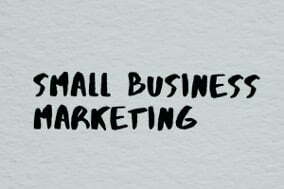Preparation is a powerful business advantage. Discover five practical ways to ensure your business is opportunity-ready – from keeping your strategy current to strengthening your value proposition – with expert advice from Streamlion Consulting.
Business Tips (inc. post-Covid)
4 things to consider when you evolve your business
Dec 1, 2022 | Business Tips (inc. post-Covid)
We all had to adapt and change to a ‘new normal’ as the pandemic spread. And the merry-go-round of British politics alongside the cost-of-living crisis is leaving a continual wake of changes that we need to embrace and adapt to.
Collaboration for the Hospitality Sector
Jul 22, 2022 | Business Tips (inc. post-Covid)
Dave from Collaboration Junkie specialises in helping brands get high quality referral leads on a consistent basis by building a strategic partner programme.
How to Think Big and Create Sustainable Business Growth
Jul 6, 2022 | Business Tips (inc. post-Covid)
Creating sustainable growth for your business is a goal shared by all business owners. Sometimes we can lose sight on how to achieve this. ‘Thinking Big’ is an incredibly powerful strategy, but only if it’s done with clarity and quality.
How to drive footfall to your business
Jun 28, 2022 | Business Tips (inc. post-Covid)
You’ve got your loan agreed and the money is in the bank. You’ve set up your business, but now you need to drive the...
The Ultimate To Do List For Successful Business Startups
Jun 12, 2022 | Business Tips (inc. post-Covid)
Most business ideas are borne out of a desire to change something; to do it better, faster, cheaper (or more...
Exit Strategies and why the end should start at the beginning
May 3, 2022 | Business Tips (inc. post-Covid)
When it comes to success in business, there’s a chapter people rarely consider. The art of the exit strategy is the...
Why cashflow planning is the secret to business success
Apr 3, 2022 | Business Tips (inc. post-Covid)
The UK is known for being highly entrepreneurial, with over 99% of all domestic businesses being classified as SMEs....
The importance of the credit check when starting a new business
Jan 10, 2022 | Business Tips (inc. post-Covid)
Starting a new business is daunting at the best of times, but when you need to consider a loan in order to get set up,...
When it comes to start-up advice, can you afford to take it for free?
Oct 18, 2021 | Business Tips (inc. post-Covid)
When you want to start a new business, success is dependent on getting off to a good start. It’s a stressful time for...
The Entrepreneur Handbook
Aug 31, 2021 | Business Tips (inc. post-Covid)
We often think of entrepreneurialism as a solo endeavour, but it doesn’t have to be that way. Many successful...
The best business ideas – 2021
Aug 23, 2021 | Business Tips (inc. post-Covid)
A regular feature in Streamlion’s blog, the best business ideas are out for 2021. Published by Startups.co.uk they are...













